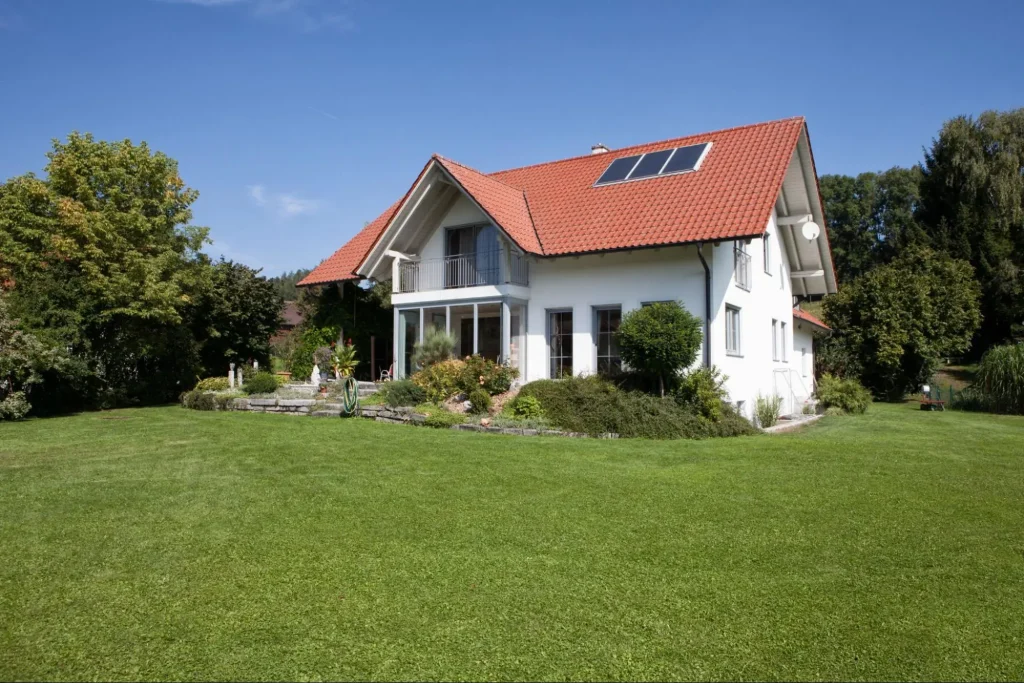
As the leaves begin to turn and the air becomes crisp, it’s a clear sign that cooler weather is on its way. These changes signal the need for homeowners to start preparing their homes for fall. Engaging in fall home maintenance not only helps safeguard your property against the coming winter but also ensures that you can enjoy the season’s comforts without any unwelcome surprises. Taking proactive steps can be the difference between a well-protected home and costly repairs down the line.
The transition into fall is the perfect time for an exterior home inspection. Look for signs of wear on your roof, siding, and foundation. Sealing gaps, cleaning gutters, and touching up paint are just a few ways to prevent water damage and maintain the integrity of your home’s exterior. Inside your home, ensure that your heating system is serviced and ready for increased use. Additionally, checking for drafts and adding insulation where necessary can increase comfort and reduce heating bills.
Before the chill of fall sets in, a thorough exterior home inspection can safeguard your home against the elements. This process will include checking the integrity of the roof, ensuring your gutters are clear, weatherproofing windows and doors, repairing any siding and paint issues, and securing the foundation.

As the fall season approaches, preparing your landscape and garden is crucial for ensuring their endurance through the cooler months. This preparation includes caring for your lawn, securing trees and shrubs, and getting your garden ready for the cold.
Your grass’s health during fall influences its revival in spring.
Trees and shrubs are vulnerable during winter’s harsh conditions.
Fall is a time to protect and enrich your garden soil.
By following these specific steps, you ensure your outdoor space is well-maintained and primed for when warmer weather returns.

As colder months approach, ensuring your home’s warmth and safety is crucial. Specific attention to your heating system, fireplace, chimney, and pipes will greatly reduce your risk of discomfort and costly emergency repairs during winter.
Before the chill sets in, schedule a professional inspection of your heating system. It’s essential to verify that it operates efficiently and safely. Change your furnace filter regularly to maintain air quality and system performance. Consider adding a humidifier to your setup, as it can enhance the heat’s effectiveness by adding moisture to the air, making it feel warmer at lower temperatures.
Ensure your fireplace and chimney are clean, free of obstructions, and in good repair. A chimney sweep is not just quaint folklore; it’s a safety necessity to prevent chimney fires and carbon monoxide buildup. Check the flue for a tight seal when closed to prevent drafts. If you have a gas heater, make sure it’s serviced and that all connections are secure.
Frozen pipes can burst and cause significant water damage. To prevent pipe freeze, insulate pipes, especially those that run along exterior walls or in unheated areas of your home. During particularly cold snaps, keep cabinet doors open to allow warmer air to circulate the pipes, and consider letting faucets drip slightly to prevent freezing. Set your thermostat to a consistent temperature day and night to aid in this.
Remember to test your carbon monoxide detectors to ensure they are functioning correctly, as heating appliances can emit this deadly gas. Regular maintenance and foresight can keep your interior comfortable and prevent emergencies throughout the fall and winter seasons.
As fall approaches, ensuring your home is secure and energy-efficient is paramount. From checking alarms to weatherproofing, these steps can significantly reduce risks and save on heating bills.
Regularly check your smoke detectors and carbon monoxide detectors to ensure they’re in working order. Replace batteries at least twice a year or as needed to maintain functionality. A functioning alarm system is crucial for your safety, especially as the use of heating systems increases during cooler weather.
Begin by replacing your air filter to improve the efficiency of your heating system. Sealing gaps with weather stripping can also prevent heat loss and reduce fuel consumption. You might want to consider having a professional inspection of your heating system to prevent unnecessary heating bills and ensure it is operating at peak efficiency.
Prepare for unexpected weather by stocking up on resources such as shovels, salt, and emergency fuel sources. Keep a list of emergency contacts in a readily accessible place. Don’t forget to assemble an emergency kit with essentials like flashlights, extra batteries, blankets, and non-perishable food.
Preparing your home for cooler weather is a proactive way to ensure comfort, safety, and efficiency throughout the fall and winter. Following this fall checklist will help you cover all the essential tasks to protect your home from the cold and potential damage. For homeowners looking for professional assistance, Kaminskiy Care and Repair provides expert services to help with your home maintenance needs. Our experienced team can handle everything from furnace inspections to exterior repairs, ensuring your home is perfectly prepped for the season. With your checklist completed and Kaminskiy Care and Repair at your side, you can enjoy the cooler months with peace of mind, knowing your home is well-prepared.
As temperatures start to fall, it’s crucial to take specific actions to protect your home. These FAQs cover essential winterizing steps to ensure your home remains safe and warm during the cooler months.
Prepare your home for the drop in temperature by cleaning your rain gutters to prevent blockages and inspecting your heating system for efficiency. Sealing gaps around doors and windows can also greatly reduce heat loss.
To prevent the risks associated with a hard freeze, insulation of your water pipes is vital to prevent them from bursting. Ensure that your heating system is in good working order and that you have an emergency kit ready in case of power outages.
For safety, you should check your smoke and carbon monoxide detectors and ensure you have a fire extinguisher. Additionally, you should have a professional inspect your fireplace and chimney before use to protect against house fires.
If you’re leaving your house unoccupied, it’s critical to set your thermostat no lower than 55°F to prevent pipes from freezing and to inspect your driveway for cracks that may worsen with freeze-thaw cycles. It’s also wise to ask someone to periodically check on the property.